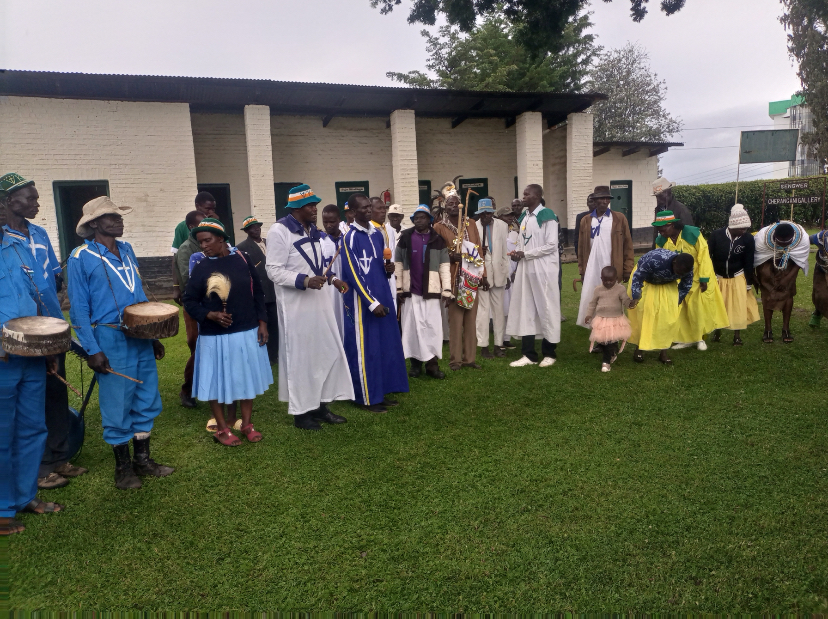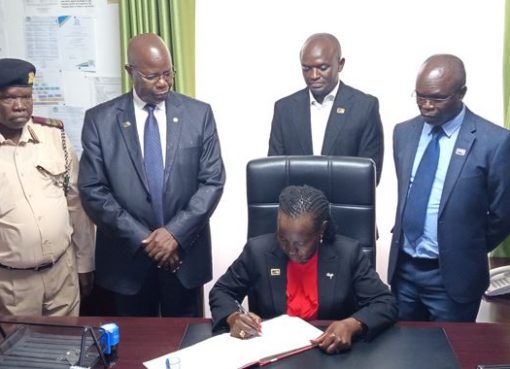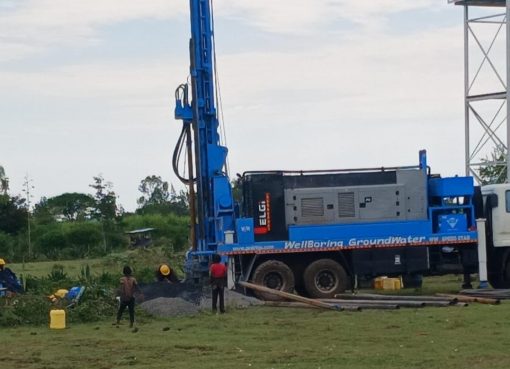An exhibition has been launched at Kapenguria Museum in West Pokot County that presents a profound opportunity to examine the complex relationship between historical injustices and modern political identities in Kenya, Ghana and South Africa.
The exhibition highlights legacies of slavery, colonialism and apartheid that seeks to engage visitors to the museum in a critical dialogue about the historical events and how they have shaped the modern social and political landscape in Kenya, Ghana and South Africa.
On show also, is a spotlight on how the system of oppression directly affected the populations of Kenya especially the Dini ya Musambwa sect in West Pokot County who they say their leader Lukas Kipkech was killed by colonialists and his body has never been found for burial.
According to Dr. Chloe Josse-Durand, the lead researcher in Kenya from Newcastle University, the forgotten heroes of Kenya whose stories about the struggle for Kenya’s independence have been overlooked yet they played significant roles in resisting colonial rule and advocating for the rights and freedoms of Kenyans.
She stated that in West Pokot County, grassroots activists, who made substantial contribution to the independence movement are yet to be recognized, highlighting the struggles of the rights and freedom by Dini ya Musambwa who had resisted the colonialists in the year 1940s and 1950s in an effort to shape the country’s history on the freedom of worship, on the rights and freedoms of Kenyans.
Josse-Durand said the Dini ya Musambwa resistance movement, particularly in relation to its religious aspect and broader struggles for independence have not been recognized and the church feels they should be recognized noting that they have collected testimonies about the sect that would enable it to be recognized for their efforts during the struggle for independence in Kenya.
She said they have collected information about the experiences and testimonies of various generations, from elders to students, in understanding the impact of colonialism.
“We have collected testimonies from elders of the Dini ya Musambwa, students and new generations to get to understand how Kenyans engaged with their colonial past and also to understand better the nature of colonial violence that took place in Kenya and at Kapenguria area of West Pokot in early 1940s to 1960s until the independence of Kenya from the British colony,” Dr. Josse-Durand said.
She said the exhibition would serve to amplify voices that have historically been marginalised, fostering a deeper understanding of the nature of colonial violence during the independence period.
The researcher stated that the exhibitions that have been launched in Kapenguria Museum are made up of 14 documents that are written in English telling the stories of different types of incarcerations in Kenya, Ghana and South Africa and the relationship between memories of slavery, colonialism and current political identities.
Adherents of the Dini ya Musambwa sect on their part have called on the government through the management of the National Museums of Kenya to consider special recognition of the religious movement that helped in the struggle for independence especially in West Pokot County where the movement still enjoys support.
They disclosed that the founders of the religious movement Elijah Masinde wa Nameme (Bungoma), and Lukas Kipkech (West Pokot), played a key role in the fight for colonial emancipation but their monuments are conspicuously missing at the Kapenguria Museum which is known for being the home of the famous Kapenguria Six viz Jomo Kenyatta, Kung’u Karumba, Bildad Kaggia, Fred Kubai, Paul Ngei and Achieng’ Oneko.
Wanjala Kapule from Maeni, Kimilili Sub County in Bungoma County said that the Bukusus and the Pokots were like Siamese twins united under the Dini ya Musambwa and resisted the mistreatment by the British Colonists hence the need for their recognition at the museums in the region.
“Elijah Masinde was our spiritual father and he collaborated with his diehard supporter Lukas Kipkech who led the Pokot nation into resisting the colonial subjugation. His teachings that won the souls of many Pokots led to the Koloa massacre that is somehow given little recognition,” he argued.
He held that the two spiritual figures should be accorded some historical space at the Kapenguria Museum where their monuments should be erected as a sign of honour and knowledge expansion about the participation of the Pokot community in the struggle for independence.
“We have a total of eight cells here but only six have been labeled because they hosted the Kapenguria Six who are always being talked about for being Mau Mau leaders. Why can’t we have the other two rooms set aside to show the history of Elijah Masinde and Lukas Kipkech?” he wondered.
According to the Dini ya Musambwa movement which still enjoys fellowship in West Pokot County; the two ‘messiahs’ seem to have been forgotten following the criminalization of the religious movement even after independence.
“We want to see their portraits strategically placed in this museum so that any visitors coming around to see where the Kapenguria Six were locked up can have a broader history of how the locals also participated in the independence struggle,” suggested Mzee Kapule.
The adherents lauded various scholars and researchers for conducting studies long after independence to unearth some untold stories about the Dini ya Musambwa and the aftermath of the struggle for independence.
Dini ya Musambwa official in West Pokot Kebireng Lomokidaring said since he assumed office in the 1980s, narrated that their leader was tortured by the colonial masters but that made him to grow stronger in faith.
Kebireng called on the present government to consider petitioning the British government to identify where Kipkech’s body was buried so that they can celebrate him.
The sect followers were among the entertainment groups that graced the launching of the new exhibitions at Kapenguria Museum courtesy of Newcastle University Researchers Dr. Chloe Josse-Durand and her colleague under the Afterlives of Colonial Incarceration in Africa project.
Acting Curator National Museums of Kenya, Western Region, Julius Ogega said that the exhibitions will help in repurposing some of the detention centres in the country which is a project of the Newcastle University and is being carried out in the three counties.
Ogega commended the launch of the new exhibitions at Kapenguria Museum saying it will bring new visitors and researchers to the site and also help in interpreting the Kapenguria Six cells and some two other sites in Aguthi and Mweru in Central Kenya.
By Richard Muhambe and Anthony Melly





